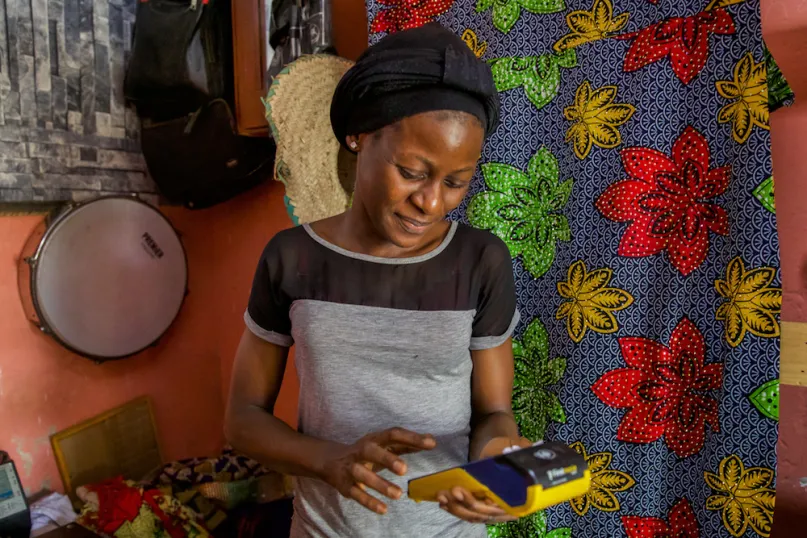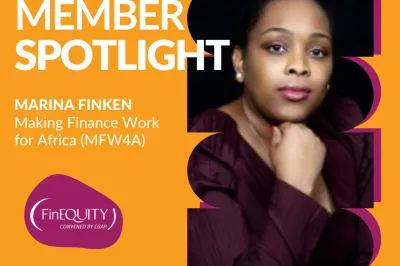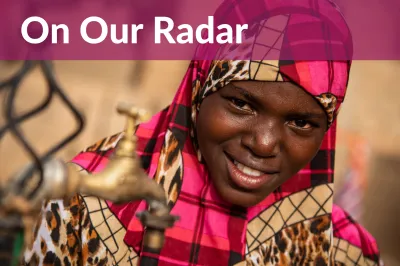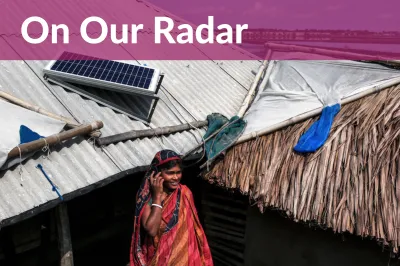Driving Formal Savings: What Works for Low-Income Women?

While financial inclusion is expanding globally, the gender gap in access to financial services and products persists. Throughout Sub-Saharan Africa, low-income women remain chronically underserved in their ability to access, use, and benefit from financial products. Although account ownership more than doubled from 23% in 2011 to 55% in 2021, the region lags behind others when it comes to closing the financial inclusion gender gap. According to the 2021 Findex, the gap rose from 5% in 2011 to 12% in 2021. In countries like Cote d'Ivoire and Nigeria, the gender gap is as high as 27% and 20%, respectively.
In an effort to close this gap and to improve women’s meaningful use of financial services, Scale2Save has supported financial service providers (FSPs) to transition toward gender-aware strategies and to build tailored products that create opportunities for women and lower barriers in their lives.
The first step in this process requires a better understanding of the types of savings products and services that women value, prioritize, and need. With this goal in mind, MarketShare Associates conducted customer market research between October 2021 and June 2022 with six of Scale2Save’s partner FSPs in Cote d’Ivoire, Kenya, Morocco, Nigeria, and Uganda. In this post, we highlight the most salient takeaways from this research, which are captured in the recently published learning brief on ‘Driving formal savings: What works for low-income women’.
Women’s savings goals and needs
Women customers’ savings goals can be organized into three distinct categories: household expenses, planned investment, and unexpected emergencies. The research found that over 40% of women primarily set money aside for unexpected emergencies and/or household expenses. Saving for investments in the future was less common among low-income women customers – representing only 26% of those surveyed.
Women’s specific savings goals are influenced by a range of internal and external factors:
- Women’s economic status is often a determining factor. For instance, women with irregular incomes have a more acute need to save for consumption smoothing, while those with greater financial stability are more likely to save for future investments.
- Beyond income, women’s life cycles influence their savings goals. Young women entering the workforce, while a diverse group, have a clear propensity to save for unexpected emergencies. Those in the ‘motherhood’ stage tend to prioritize savings for education and other occasions.
- Other external factors also influence women’s savings goals, such as the effects of the COVID-19 pandemic, which reinforced the importance of accumulating sufficient savings to cope with unexpected shocks and stressors.
- Lastly, the design of the savings product can considerably influence savings goals. More specifically, commitment or goal-based savings accounts that restrict access until reaching a particular date or balance are more likely to be used for long-term or specific goals.
Product value proposition that drives uptake and use among women
The research identified five important factors that women consider when adopting formal savings products: place, price, people, security of savings, and product features. ‘Place’ – or the ability to access financial services and products easily and conveniently – plays a pivotal role in women’s uptake and use of savings products, as reported by 43% of those surveyed. A further 32% and 27% of the women, respectively, identified ‘price’ (i.e., the cost of using financial products and the monetary benefits derived from using them) and ‘people’ (i.e., customer service) as two important drivers. The ability to securely keep savings in a formal account was also a factor in the uptake and use of products, while product features were identified by fewer women.
Figure 1. Product value proposition that drives uptake and use among female customers

How can we best meet the needs of women?
The following key takeaways emerged regarding women’s needs and preferences for savings products:
- Increased accessibility and proximity through branchless banking models are critical enablers of women’s use of core banking services, whose access to these services is often hampered by limited mobility and time poverty.
- Simplified account opening processes characterized by expediency, convenience, and reduced Know Your Customer (KYC) requirements, as well as interoperability and integration with other payment or banking services are product features that some women greatly appreciate. Albeit important, the relatively small proportion of women who identified product features as a key driver suggests that efforts to communicate and sensitize customers to such features need to be bolstered.
- Women customers place greater importance on customer service than men, particularly first-time users of formal financial products. While women appreciate quick and convenient delivery channels, they also value those that enable face-to-face interactions and provide trust, information, and assistance, such as agents.
- Cost and affordability are important drivers of assessing savings products, particularly as the cost of using formal financial products often puts banking out of reach for low-income women.
- Keeping savings in a formal account provides women customers with peace of mind. Women highly value the security that formal savings accounts offer, reducing incidences of both theft and impulsive spending.
Women appreciate savings products that are affordable, accessible, reliable, and safe. However, certain types of women customers value certain aspects of a product’s value proposition more so than others. Women’s needs and preferences for savings products vary based on a range of factors including where they live and work, their level of trust and financial literacy, and their age. While it may not always be possible to design products that meet the specific needs of all women, where possible, customer centricity and smart design can bring substantial benefits to financial service providers and customers alike.
Alexandra Sanchez is a PHB Development partner and supported the coordination, edition, and dissemination of Scale2Save’s learning outputs.
Laura Courbois is a Strategy, Research, and MEL Consultant with MarketShare Associates (MSA).



Dear colleagues,
I really appreciate this blog on saving, and the interesting paper. We have been conducting grass-root research on saving mobilization in Ethiopia, especially by microfinance institutions which have been allowed to mobilize ‘’public savings’’ from day-one of acquiring their license from the Central bank! The finding (in a comprehensive SAVING Manual http://assets.fsnforum.fao.org.s3-eu-west-1.amazonaws.com/public/discus…) was a bases for conducting several rounds of effective staff training…. A summarized version is also posted at this web-site
https://www.findevgateway.org/case-study/2015/02/overview-practical-cha…
Some issues for deliberations:
*Staff at the frontline are perhaps the IMAGE of institutions. They need to develop pro-poor perspectives, attitude, etc. Women staff are often more preferred by women clients. … In our research, I remember a story told by a women customer officer. She moved from the MFI (where she used to work) to another MFI which pays better, and all the 24 women savers (who have been with the customer officers for long) closed their accounts at the former and opened new accounts at the MFI where the staff moved to. In fact the clients didn’t ask or question the potential difference in saving INTEREST rate in the two financial service providers.
*Building TRUST on institutions is critical for mobilizing savings (--demonstrate their competitive advantages, for example, in what ways are the institutions better than alternative service providers (formal and informal, including saving at home). However, most staff at the frontline are less equipped on this, and such staff spend much of saving promotion time teaching the ‘’benefit’’ of savings (including advertising on the level of interest rate, etc)…. In many cases, such frontline staff – who otherwise accumulate a lot of suitable PRODUCT IDEAS from their day-to-day contacts with clients and potential clients – have lower VOICE, or participation in institutional decision making regarding product design
*Household gender relations have impact on savings by women. As we all know in ruralfinance, creating the ACCESS TO CREDIT to poor women was considered for long (since Grameen bank’s earlier years three-four decades ago) to be the most effective approach to empower women. … HOWEVER in most recent discussions at FinEquity (@UNCDF/CGAP) the importance of ensuring women’s ‘’control’’ of such resources are more emphasized. … There are research outcomes highlighting the fact that women who are not sure of having control on her newly earned income (or even the newly accessed loan) are very RELUCTANT TO APPLY FOR LOAN, even when the service is available nearby, and easily accessible!! See an interesting recent discussion at CGAP/FinDev https://www.findevgateway.org/blog/2022/06/how-do-savings-contribute-fi…
However, women starting ‘’independent saving’’ can also give rise to mistrust and suspicion, and potential Intimate Partner Violence in many contexts where patriarchy is dominant. Efforts need to be made to promote mutual TRUST and ultimate collaboration. Gender transformative household methodologies such as GALS are increasingly becoming appreciated in development interventions.
Thanks and Regards
Getaneh
Leave a comment